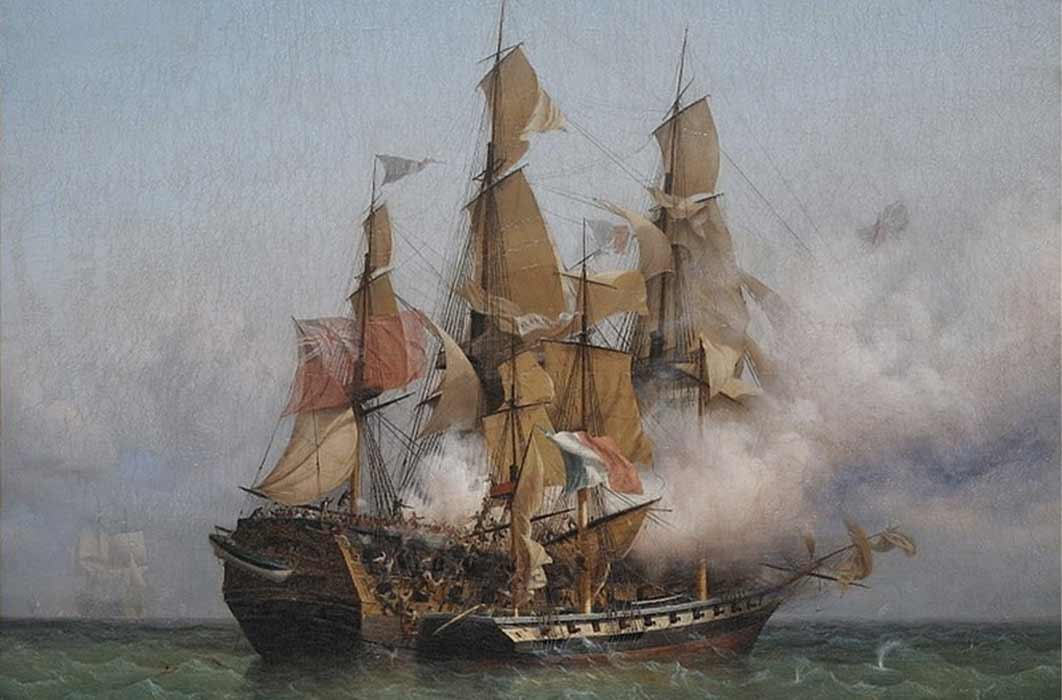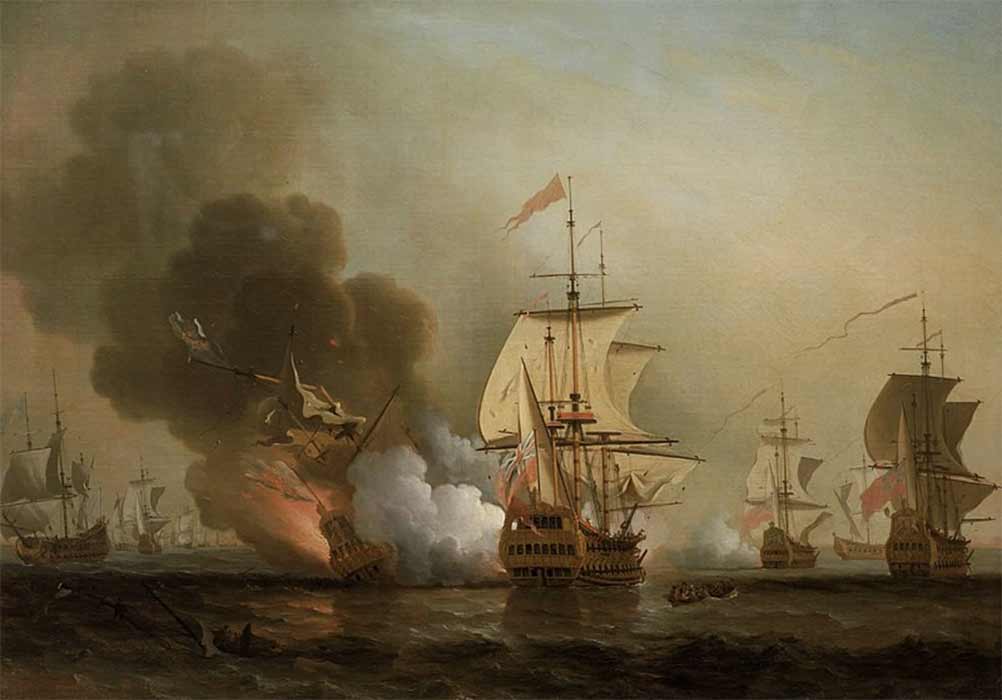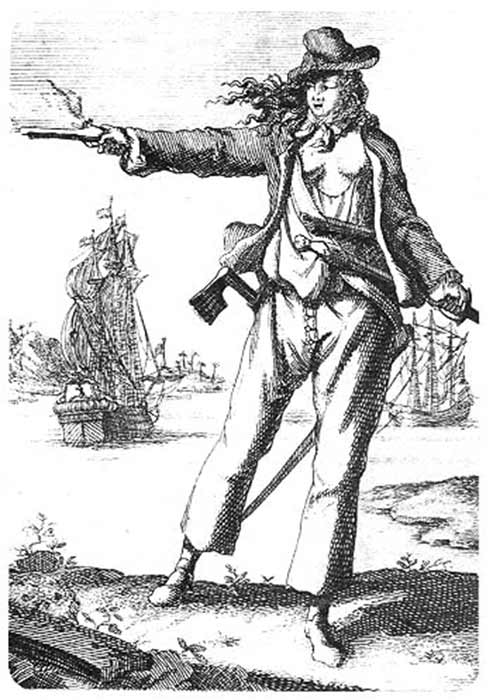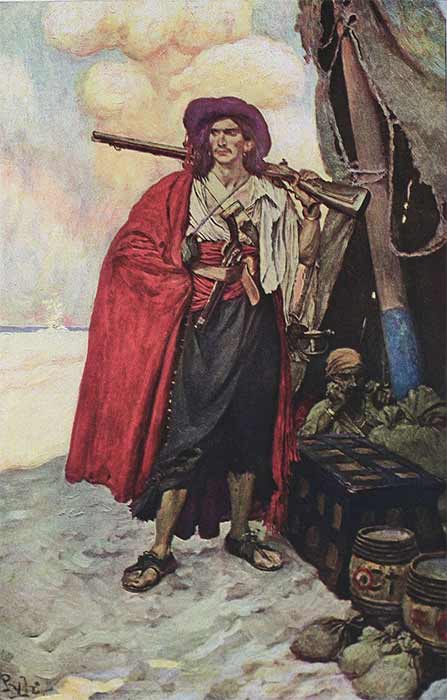
Buccaneers’ Brimstone, Booty, Brotherhood and Betel Nut
The goal of a pirate of the West Indies was to capture his prey, with as little damage as possible, so that he could resell the vessel, including its cargo and crew. Therefore generally, the freebooters rarely used cannons to capture a vessel, so not to damage it. However, when they did use cannon, they used artillery pieces of various calibers.

Wager's Action off Cartagena, 28 May 1708 by Samuel Scott (Public Domain)
Cannons On Board
The most common cannon calibers were four-pounders, six-pounders, and eight-pounders, but rarer on pirate ships were pieces of 12, 18, 24, found only on the frigates. Pieces of 32 were prevalent in large vessels of the Royal navies. The use of cannons implied not only knowledge of the weapons, but also the number of sailors serving the artillery force. Cristiano Bettini in his book Come progettavano i velieri (How they designed sailing ships) reports that a four-pound cannon required a number of gunners equal to six. A 24-pound cannon required 12 skilled sailors. The maximum range of the largest calibers reached up to 2,000 meters, (1.2 miles) but the effective shot was reduced to no more than 500 meters. At this distance, the damage inflicted on hulls, crews and equipment was considerable and aimed primarily at rendering the opponent inert before capture, rather than sinking the prey itself.
Every piece of artillery was equipped with everything it needed: the sponge, the brush, the limestone, the powder horn, the firebox breaker, the aiming wedge and the iron crowbars. Everything was neatly arranged, ready to spit iron, smoke and flames at the enemy. Sulphur, charcoal and saltpeter - the three components of gunpowder - were stowed in separate barrels on the ship, due to the movement of the vessel and all the shocks of rough seas and waves. One method of compacting the powder was to urinate on it or mix it with alcohol. A 17th-century ship was ultimately a giant floating explosive box. In fact, ships were largely constructed of wood, cordage and linen; they were waterproofed with pitch, tar, seed oil, greased tallow and tow - all flammable materials. In addition, these vessels often stored large quantities of seasoned lumber for repairs, wooden barrels for storing salted food and liquor, and last but not least, large quantities of gunpowder for cannons, rifles and pistols.

Anne Bonny from a Dutch version of Charles Johnson's book of pirates (18th century) (Public Domain)
Muskets And Riffles
The buccaneers of Hispaniola used a type of rifle, a long musket, probably of Dutch or French origin. Benerson Little in The Sea Rover's Practice reports that the French of Hispaniola called it "Fusil Boucanier" or also "Fusil ordinaire de chasse" (ordinary hunting rifle). The peculiarity of this rifle was its length, which had an impact on the eventual range, between 300 and 500 yards. In reality, the ball could mortally wound at a maximum of 250 yards, unless the shot penetrated the brain. The barrel alone could measure up to 4.5 feet (about 137 cm) with a total weapon length of about 5.9 feet to 6.2 feet (180/190 cm). The caliber of these rifles was approximately .75. The problem was what the British called "windage", that is, in a given firearm there were differences between the actual caliber of the barrel and the caliber of the fired ball (generally slightly smaller). Barrels ranged in caliber from .732 to .777 with .681 caliber balls.
- Hostis Humani Generis: Pirates Of Port Royal And Tortuga
- Treasure Hunters Seeking Hide-Outs of Mascarene Pirates
- The Age of Sail Recaptured: Model Maritime History in Mauritius
Buccaneer rifles were later introduced to the French government in the late 17th century. These long muskets were standardized with a barrel caliber of .70 and a ball caliber of .65. For a musket, maintenance was vital, especially the barrel. Generally, the barrels of buccaneers' rifles featured a black coating with découpage, or japanning, rust proofing. Cleaning also extended to all other metal parts. The problem was that buccaneers, and generally all New World hunters, made extreme use of their rifles, to the detriment of the trigger mechanisms and the proper sliding of the balls inside the barrels. To clean the slight ripples of rust and residual dust the buccaneers used camp wood, or Campeche wood (Haematoxylum campechianum). Also popular was sea grape, or coccoloba (Coccoloba uvifera). In the absence of the first two, buccaneers also used the false mangrove, which they called Burton Wood, or even Buttonwood (Canocarpus erectus).





